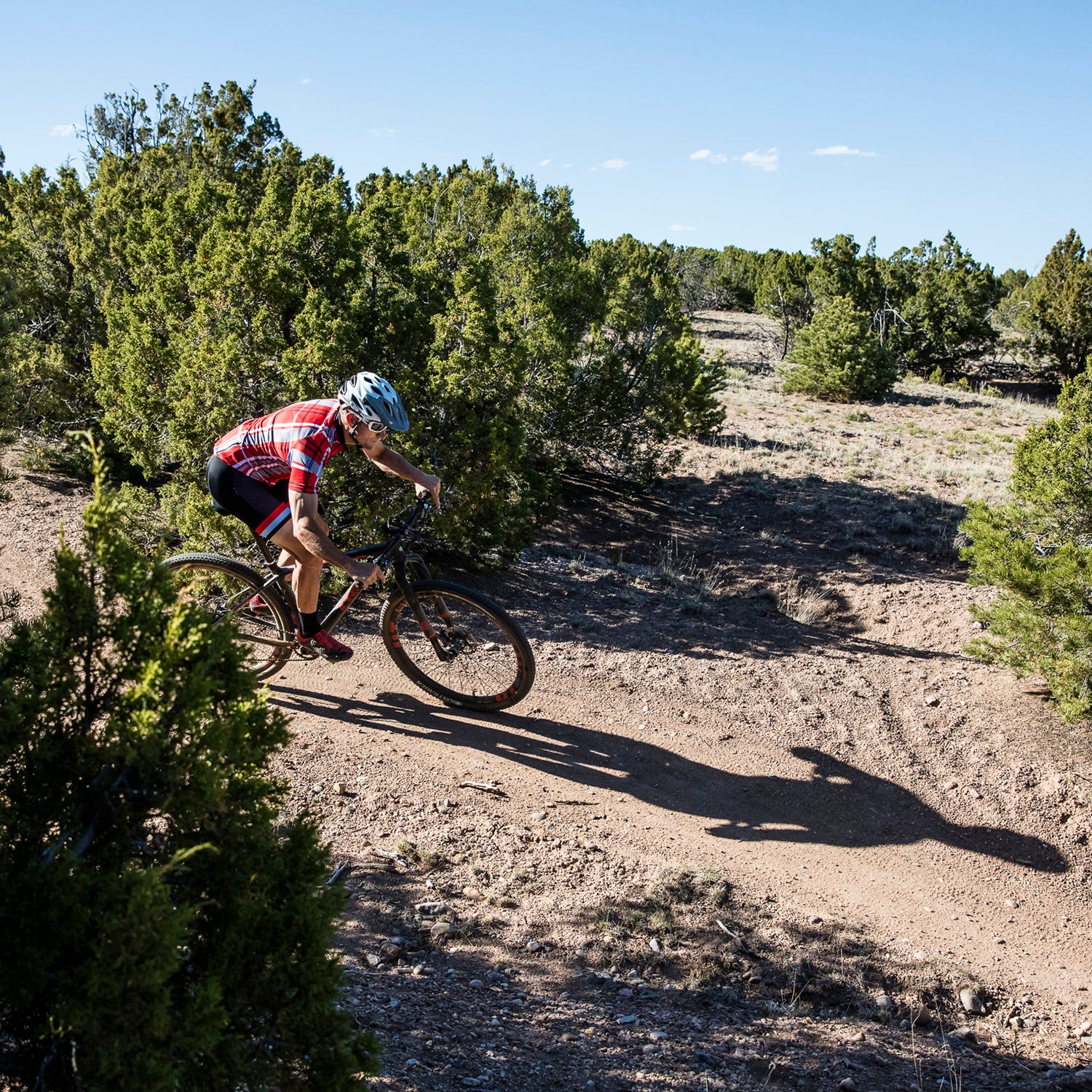The Takeaway
The Good: The IsoSpeed decoupler takes the hard edge off trails and makes it possible to go faster for longer. The combination of Boost hub spacing and the excellent new DT Swiss XMC 1200 Carbon makes for some of the lightest, stiffest, hardest-driving wheels we’ve ridden. RockShox’s RS-1 fork is the fork benchmark for small-bump compliance and XC performance.
The Bad: The 2.0-inch Bontrager XR1 tires might be fast, but they are too skinny to provide any compliance, tore easily in our desert environment, and were the first things we replaced. At $8,000, this is a machine only for the rarefied ranks of World Cup racing (though Trek offers carbon Procal models down to $2,400).
The Verdict: If cross-country racing is your thing, you’d be hard pressed to find a better machine than the . It’s stunningly light at 19.2 pounds, as fast and nimble as you’d expect for a fully tricked-out hard tail, yet the rear triangle design ensures that it doesn’t beat you up like most other race bikes.
If you asked me a year or two ago, I’d have told you that hardtails were dead. Suspension and carbon layups have gotten so good and light that there’s almost no weight or efficiency penalty for picking full-squish.
But two developments have changed my opinion. First, the rise of plus-size tires has made hardtails comfy and capable in ways that they have never been before. And second, several companies, most notably Trek with the Procaliber, have taken to re-engineering race hardtails with some semblance of comfort.
Which means that if you race, or if you live in a place with smooth, fast trails, hardtails are once again worth considering. (Note: Unless you’re five foot or smaller and can’t fit on a 29er, forgo the 27.5-inch hardtail models, which I consider the worst idea to have surfaced in years: small wheels plus rigid frame equals worst-of-both-worlds harshness.)
Specs
- Price: $8,000
- Weight: 19.2 pounds
- Drivetrain: Shimano XTR
The Frame
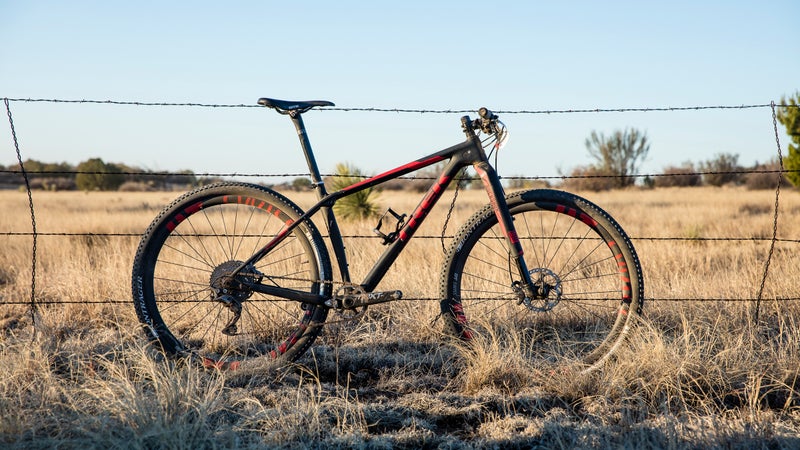
Two things make the Procaliber SL frame stand out. First, and most obvious, is the IsoSpeed decoupler, a design the company debuted with great success on its Domane endurance road bike (which won Paris-Roubaix and Flanders), and then incorporated into its Boone cross bike and now this XC weapon. The design disconnects the seat post from the down tube with a pair of bearings, which allows the saddle to move in a rearward arc so the bike absorbs road roughness instead of your body. It works not only because it provides vertical compliance, but also because it simultaneously keeps the bike laterally stiff for pedaling and handling.
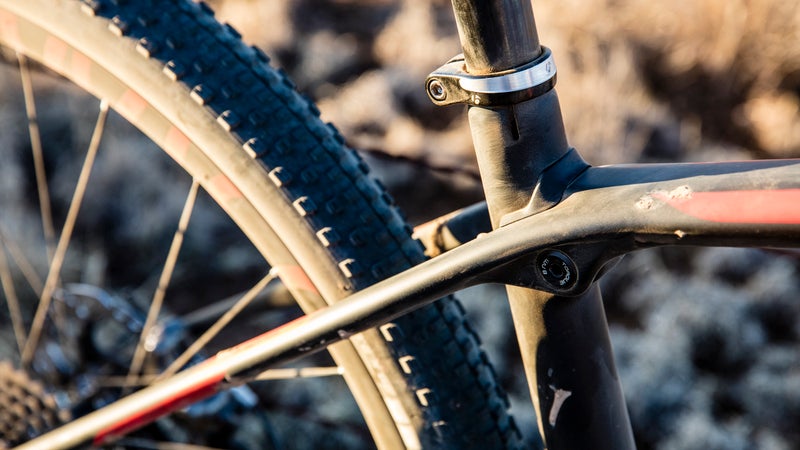
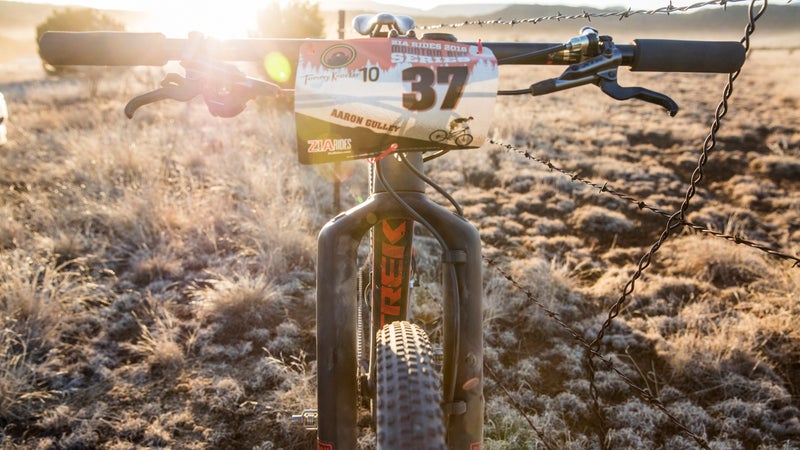
The Procaliber’s other notable characteristic reflects Trek’s increasing aptitude with carbon forming, as the company’s high-end frames are getting lighter and lighter while remaining stiff and strong. (The debut of the , for instance, saw Trek’s four-inch race bike lose nearly a pound in frame weight from the previous year’s Superfly FS.) What this means is that the Procaliber frame is as light and snappy as a road bike but still strong enough for constant trail abuse.
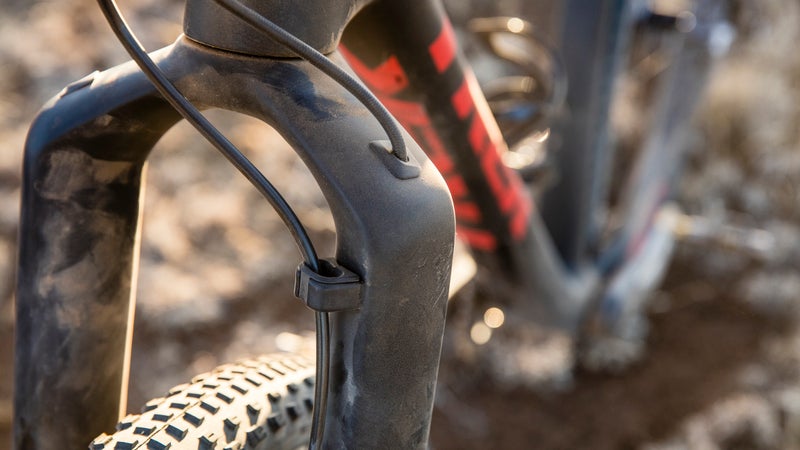
The frame sports Boost hub spacing, too, a good upgrade for a 29er since the wheels get stiffer with the additional width. And despite the frame’s featherweight, Trek also added clean internal cable routings and ports, making the Procaliber able to accommodate everything from a dropper post and/or a lockout button, as well as brakes and shift cables.
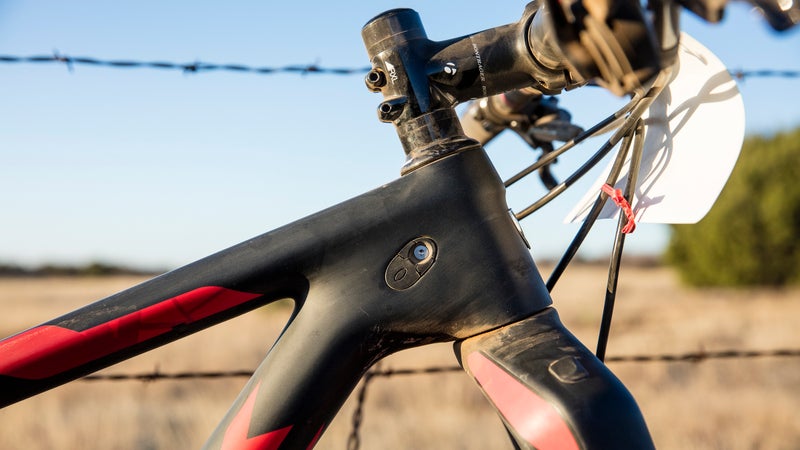
The Components
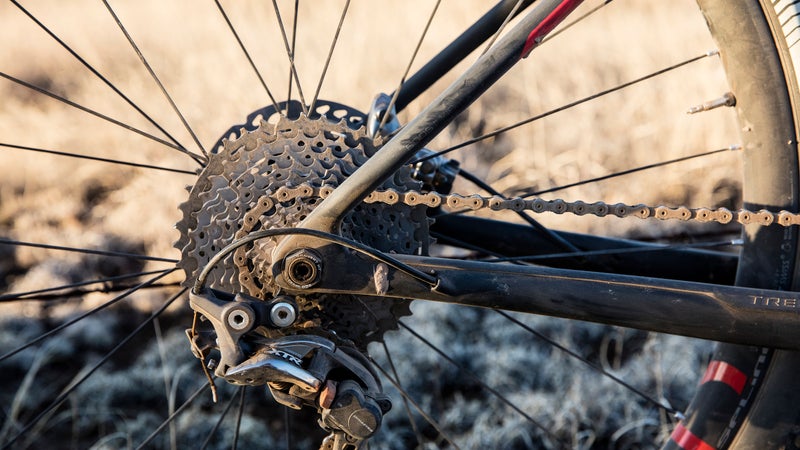
On an $8,000 bicycle, I expect everything to be completely dialed. That’s sometimes surprisingly not the case, but on the Procaliber 9.9 SL, Trek got it right. Also, incidentally, looking down the Procaliber line, Trek’s spec choices, even on the less-expensive models, are very good.
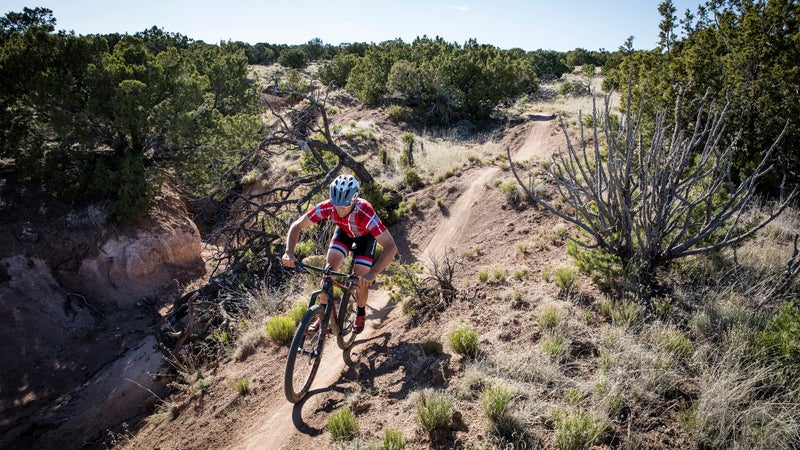
Other than the cutting-edge frame design, my favorite part of this bike is the fork and wheel combo. The RockShox RS-1, while costly, is a step above everything else out there, in terms of performance, for a short-travel bike. The full carbon crown design, with the stanchions at the base, makes for best-in-class stiffness, which you notice when carving hard turns or climbing and sprinting out of the saddle. The fork damper provides incredible small-bump sensitivity, too, but still soaks up the big bumps. Trek wisely spec’d a remote lockout, which is a must, in my opinion, on hardtails, where turning the bike rigid and back is a constant switch. And even though the RS-1 is a bit heavier than comparable standard forks, thanks to Trek’s carbon prowess, the bike is still astoundingly light.

Meanwhile, the DT Swiss XMC1200 Carbon wheels are a revelation from a company whose hoops in previous years have left me cold. I have ridden these wheels on numerous bikes this year, including on an 850-miles sojourn on the Arizona Trail, and not only do they feel like cheating because they're so light and spin up so quickly, but they also proved tough enough for rugged trails with big loads. The Boost spacing (110mm up front, 148 rear) helps with the stiffness, and the wheels also set up tubeless without issue.
As already noted, the pinner tires, while maybe okay for short, fast races, were too skinny for my liking and also too flimsy for the rocky, poky trails we have in New Mexico and Arizona. Instead, I upgraded almost immediately (well, once I’d shredded one sidewall, which took under a week) to —2.35-inch front and 2.2-inch back—which made for a much cushier and more durable ride.
Other spec notes: The Race Face Next SL crank is awesome, and the gold standard when it comes to lightweight, stiff, race machines. And I love the XTR brakes and drivetrain, but Shimano is overdue for a bigger XTR-level cassette. It’s true that the 11-40 cogs worked fine in this super-lightweight race application, but if you buy the top level goods, you should be able to get an 11-42 without downgrading to XT parts, which is what is necessary now if you want the bigger range. Oh yeah, and the cheap foam grips, while ridiculously light, are total throwaways.
The Ride
A couple of years ago, I shunned hardtails when Specialized unveiled the World Cup edition Epic. At under 20 pounds, the price you’d pay in weight over a hardtail was far exceeded by what gained in comfort from this bike. And more importantly, when I rode a rigid frame for the endurance events that I was so keen on doing, I’d end up pummeled, wishing I’d gone full squish.
So it was with trepidation that I opted to ride the Procaliber earlier this year in a 12-hour race. It was a mostly smooth, fast 16-mile loop, with a few miles of rock and ruts thrown in to keep you honest. From the get go I enjoyed the power transfer, immediacy, and snappiness of being on a hardtail. This bike corners and leans over like a road racer, and the wheels and super stiff bottom bracket give it rocket ship acceleration. All day, I felt good and fast, making clean passes on climbs because of the bike’s light weight and even smashing past people on the one swerving, rocky descent, which was a testament to the bike’s capabilities.
No hardtail is ever going to be as comfy as full suspension, but the IsoSpeed coupler actually kept my back, neck, and shoulders in line for all 12 hours, and I didn’t feel like I’d gone a round with Jon Jones the next morning. There are a lot of gimmicks out there that claim to make bikes more comfortable, but Trek’s IsoSpeed design is not one of them. With a little fatter tires than come on the bike, the Procaliber was as forgiving as a hardtail race bike will likely ever be, but gave up nothing in terms of speed and agility.
The Competition
There are too many hardtail race 29ers on the market to mention, but the inevitable comparison is with this year’s BMC Teamelite TE01, which, like the Procaliber promises added compliance out back, but accomplishes that feat with elastomers on metal rails embedded into the seat stays. Both bikes are excellent, and it’s exciting to see more than one company taking on the task of making hardtails more forgiving.
Our testers felt that the BMC was a bit more comfortable out back, though the Trek had a more linear feel in the rear-end movement. The Procaliber was also more laterally stiff, which is why most people agreed it would make a better, flat-out race bike. You can’t go wrong with either bike, and the BMC will best suit the rider after the most comfort in a hardtail. But the fact that the Trek came with an RS-1 fork and still tipped the scales a pound less than the BMC made it the overall favorite.
Buying Advice
Trek has almost singlehandedly reawakened my interest in hardtails. First came the Stache 9, which is arguably the rowdiest, most capable hardtail I’ve ever ridden, thanks to those meaty, 29+ wheels. And now the Procaliber rethinks the XC hardtail.
This is simultaneously the fastest mountain bike I’ve ridden in years, as well as the most comfortable hardtail race bike. For those after a fleet, hard-charging machine that punishes the competition and not your body, it’s the inevitable pick.
Yes, it costs a small fortune and only dedicated racers will opt for the 9.9 SL model. But the 9.8 SL is the exact same frame in a build package that’s more democratic ($4,800), and the 9.7 and 9.6 use slightly lower grade carbon layups to bring the IsoSpeed decoupler advantages to everyone.


